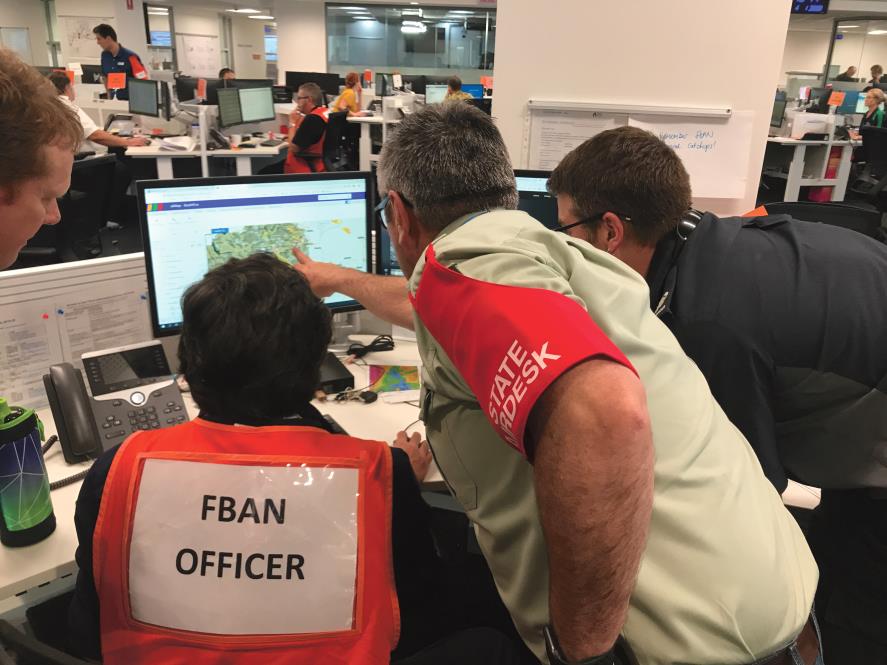
Bushfire simulation models and other predictive tools are increasingly used to inform operational and planning decisions and trained fire behaviour analysts (FBANs) provide a range of operational decision-makers with expert guidance by validating and communicating their predictions.
In Victoria, the planning and operational use of predictive services has evolved as a response to the 2003, 2006 and 2007 bushfires and related government policies, and a formal training course for FBANs was established in 2007. Since then, FBANs have provided advice to operations staff during several significant fire seasons.
There’s a range of products to support operational decision-making, such as PHOENIX RapidFire developed by Kevin Tolhurst and his team at University of Melbourne. In addition, Potential Impact Zone maps show how fires might move through the landscape, including the worst-case scenario.
These products are used in a variety of situations by a range of users including the planning and implementation of vegetation management, the presentation of intelligence and scenarios before first attack, as well as predictions of fire spread during an extended attack to inform the decisions of incident controllers and public warning officers. For example, during the 2019-20 season, by using Potential Impact Zone maps, predictive services guided the response to the ‘blow-up’ days in late December including the declaration of a state of disaster in eastern Victoria.
There’s growing support for predictive services because of the inquiries following the 2019-20 season and the public release of predictive fire spread maps in NSW, ACT and SA. So it’s timely to find out what users think about predictive services outputs, learn from their experiences, and ensure these outputs are ready for the next big fire season.
This is where social research is useful so that we can ensure the needs of operations staff are identified and met. The Research and Development (R&D) team at CFA consists of trained scientists with expertise in fire weather, fire behaviour, climate variability, fuel assessment, remote sensing, GIS (geographic information system) and social research. This combination of physical and social science strengthens our ability to translate scientific evidence into CFA practice.
Regarding current use of FBAN products by operations staff, existing social research suggests that the use of predictive services is strongly influenced by users’ values and experiences – for example, if the user knows an FBAN or has had a positive experience working with one, or if they think an FBAN has sufficient personal experience of fire or the region. We need to find out more about how trust in predictive services products and the advice provided by FBANs can be supported to ensure it remains effective and relevant.
The R&D team is currently doing a six-month collaborative project with Department of Environment, Land, Water and Planning (DELWP) and Deakin and Swinburne universities. This builds on a national online survey of predictive services users conducted in late 2020. To gain a more in-depth understanding, we carried out interviews with five FBANs and 20 operational predictive services users. This will inform the future design and use of predictive services, leading to better operational fire management outcomes for the sector and community.
This research is also a stepping stone towards future research which will investigate community understanding and expectations and how predictive services products can be designed for and disseminated to communities.